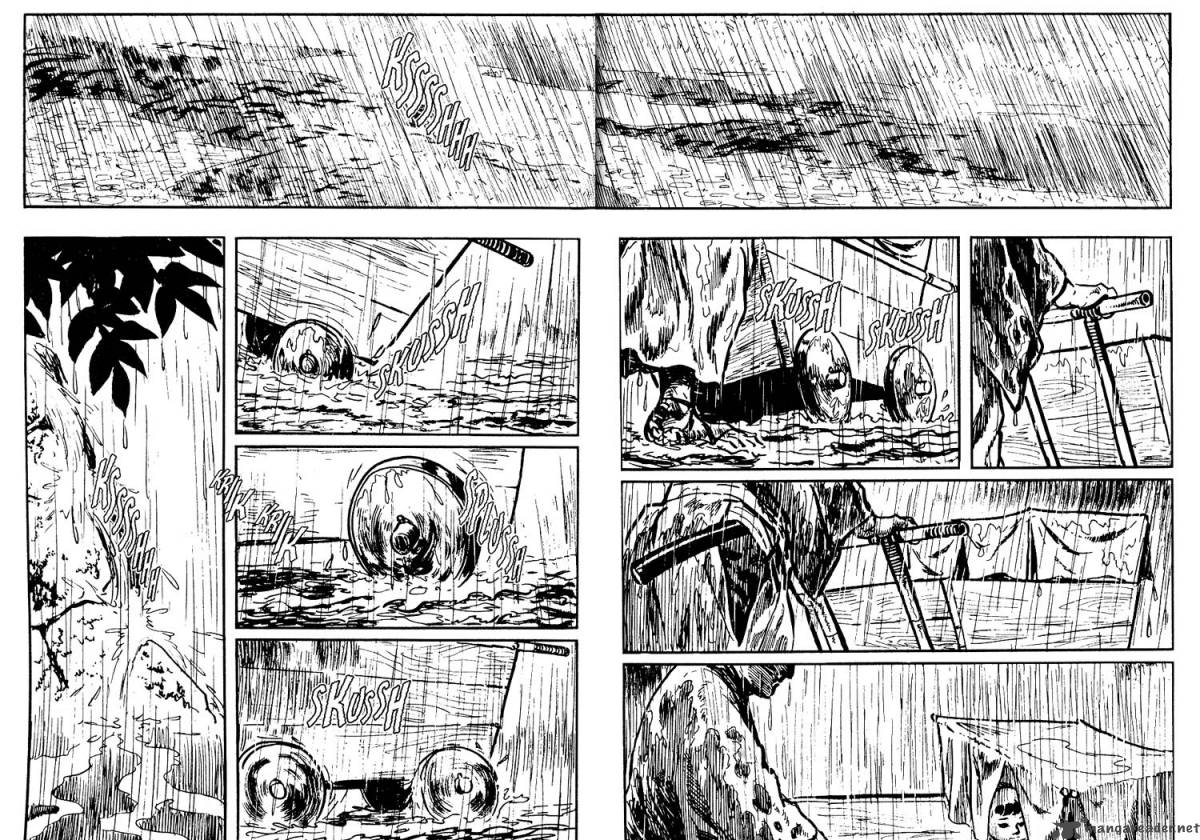 Goseki Kojima is the artist of the stunning Japanese Manga Lone Wolf and Cub, written by Kazuo Koike. Kojima was born in Yokkaichi and began his career as a poster artist and painter, before finally settling in Tokyo in 1950. There he worked as an artist on ‘Kamishibai’ (illustrated stories) for a number of publications. In the late 1950s, he was also turning to mangas and created serials like Omnitsu Yureijo (1957), Yagyu Ningun (1959) and Chohen Dai Roman, a series of classic novel adaptations (1961-67), all distributed through libraries.
Goseki Kojima is the artist of the stunning Japanese Manga Lone Wolf and Cub, written by Kazuo Koike. Kojima was born in Yokkaichi and began his career as a poster artist and painter, before finally settling in Tokyo in 1950. There he worked as an artist on ‘Kamishibai’ (illustrated stories) for a number of publications. In the late 1950s, he was also turning to mangas and created serials like Omnitsu Yureijo (1957), Yagyu Ningun (1959) and Chohen Dai Roman, a series of classic novel adaptations (1961-67), all distributed through libraries.

In 1967, he switched to a more conventional distribution and made appearances in several magazines. Tgether with Kazuo Koike, he created ‘Kozure Okami’, published in Manga Action form from 1970 through to 1976. The legendary series was finally introduced to English readers as ‘Lone Wolf and Cub’ in 1987 and the influence of it should not be underestimated. Lone Wolf and Cub influenced a great many Practitioners globally. Its paired down, naturalistic, imperceptibly detailed ink line work has certainly and notably influenced Frank Miller in particular, Kojima’s sharp and emphatic black and white line work visible in works as disparate as Sin City and 300. The later works of industry leaders such as Jamie Hewlett have they’re basis Kojima’s work whether it is immediately obvious or not. The artwork for Monkey (Hewlett and Damon Albarn’s recent foray into media-opera) is toned perfectly with period material lifted from that referenced in Kojima’s work. Most artists working in the comic book industry (and most likely in Illustration as a whole) will know Kojima’s name as a global mainstay of the industry. Truly representative of Japanese Manga artists, Kojima is efficient, technically acute, lavishly artistic and truly prolific. Lone Wolf and Cub accounts for more than 8000 pages alone (completed between 1970 and 1976).

As well as ‘Lone Wolf’ Kojima and Koike cooperated on other series like ‘Kawaite Soroi’, ‘Kubikiri Asa’, ‘Hanzo Nomon’, ‘Bohachi Bushido’ and ‘Tatamodori Kasajiro’. In 1994, he became editorial consultant for the magazine Manga Japan.
Kojima teaches all new artists what it truly means to be a great artist within your own lifetime. The production of pages at the speed he achieved is almost unthinkable to western artists. Dave Gibbons is considered efficient at 2 a day but Kojima is representative of a different breed of artist, perhaps now gone. Personal design work and augmenting and introducing a distinctive or recognisable style was clearly never Kojima’s primary function. To introduce alternative or unusual visuals was not Kojima’s main drive. His compositions are drawn with clarity and an instantaneous sense of scale and visual communication. Basic, simple compositions are given focus and artistic value with the addition of a dropping branch from the top of the panel or his decisions in showing objects in part to allow the reader to be absorbed into the story.




















